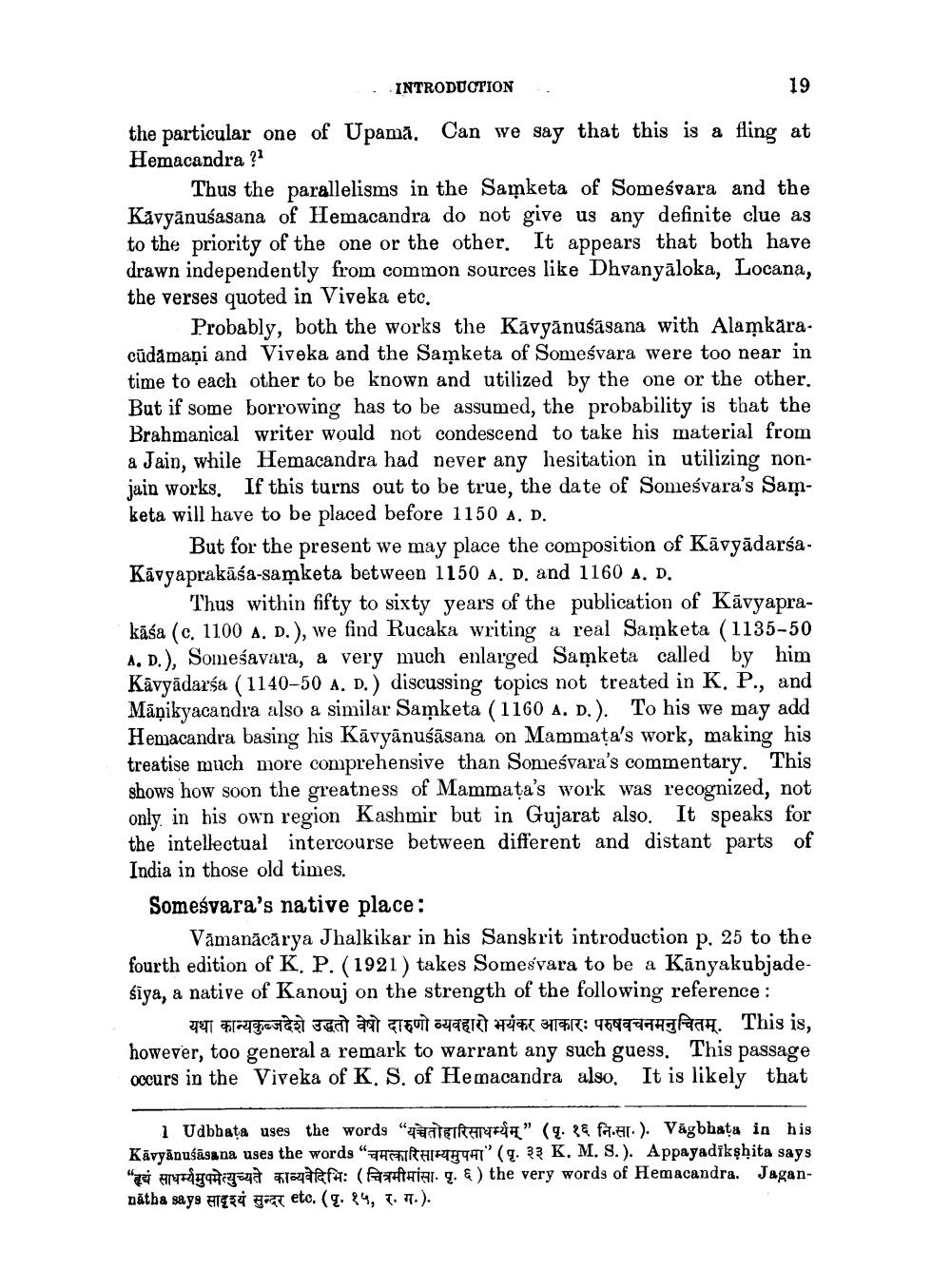________________
INTRODUCTION
the particular one of Upamā. Can we say that this is a fling at Hemacandra ?
Thus the parallelisms in the Samketa of Someśvara and the Kavyanusasana of Hemacandra do not give us any definite clue as to the priority of the one or the other. It appears that both have drawn independently from common sources like Dhvanyāloka, Locana, the verses quoted in Viveka etc.
Probably, both the works the Kávyānušāsana with Alamkāra cūdamaņi and Viveka and the Samketa of Someśvara were too near in time to each other to be known and utilized by the one or the other. But if some borrowing has to be assumed, the probability is that the Brahmanical writer would not condescend to take his material from a Jain, while Hemacandra had never any hesitation in utilizing nonjain works. If this turns out to be true, the date of Someśvara's Samketa will have to be placed before 1150 A. D.
But for the present we may place the composition of Kávyādarśa. Kávyaprakāśa-samketa between 1150 A. D. and 1160 A. D.
Thus within fifty to sixty years of the publication of Kāvyaprakāśa (c. 1100 A, D.), we find Rucaka writing a real Samketa (1135-50 A.D.), Someśavara, a very much enlarged Samketa called by him Kāvyādarśa (1140-50 A. D.) discussing topics not treated in K, P., and Māņikyacandra also a similar Samketa (1160 A, D.). To his we may add Hemacandra basing his Kāvyānuśāsana on Mammața's work, making his treatise much more comprehensive than Someśvara's commentary. This shows how soon the greatness of Mammata's work was recognized, not only in his own region Kashmir but in Gujarat also. It speaks for the intellectual intercourse between different and distant parts of India in those old times. Somesvara's native place:
Vāmanācārya Jhalkikar in his Sanskrit introduction p. 25 to the fourth edition of K P. (1921) takes Somesvara to be a Kānyakubjadesiya, a native of Kanouj on the strength of the following reference:
71891 frygesicht Jean ETET JAETT **FT 3179: 4597974an. This is, however, too general a remark to warrant any such guess. This passage occurs in the Viveka of K. S. of Hemacandra also. It is likely that
i Udbhata uses the words "qatgiRT RÆ" (q. & fa.HT). Vägbhata in his Kāryānuśāsana uses the words "S HREY41' (q. 33 K, M. S.). Appayadikshita says " Anguiana Flagfa: (
F HIAI. G. & ) the very words of Hemacandra. Jagannātha says ATERI 75 etc. (q. 84, T..).




